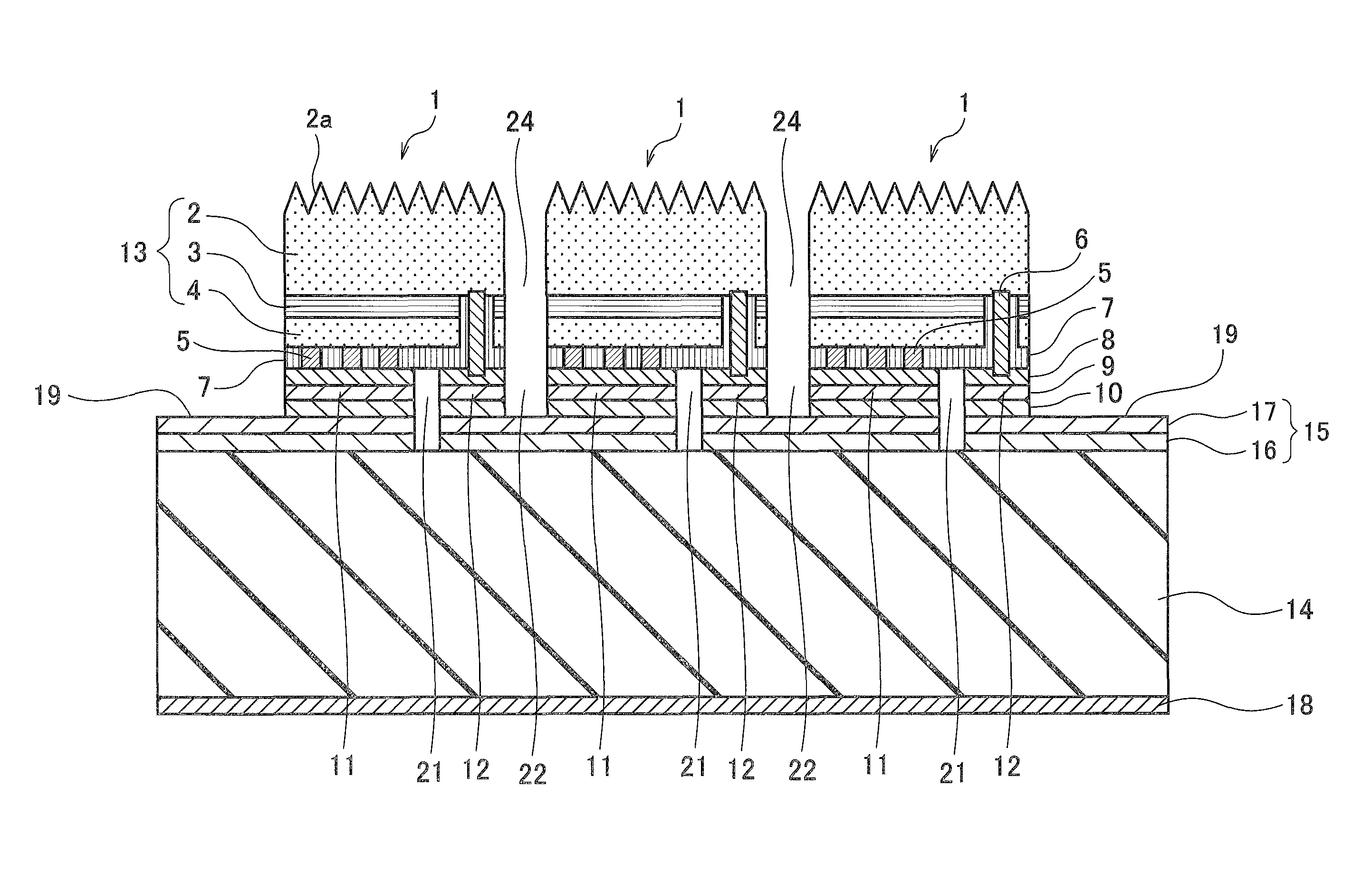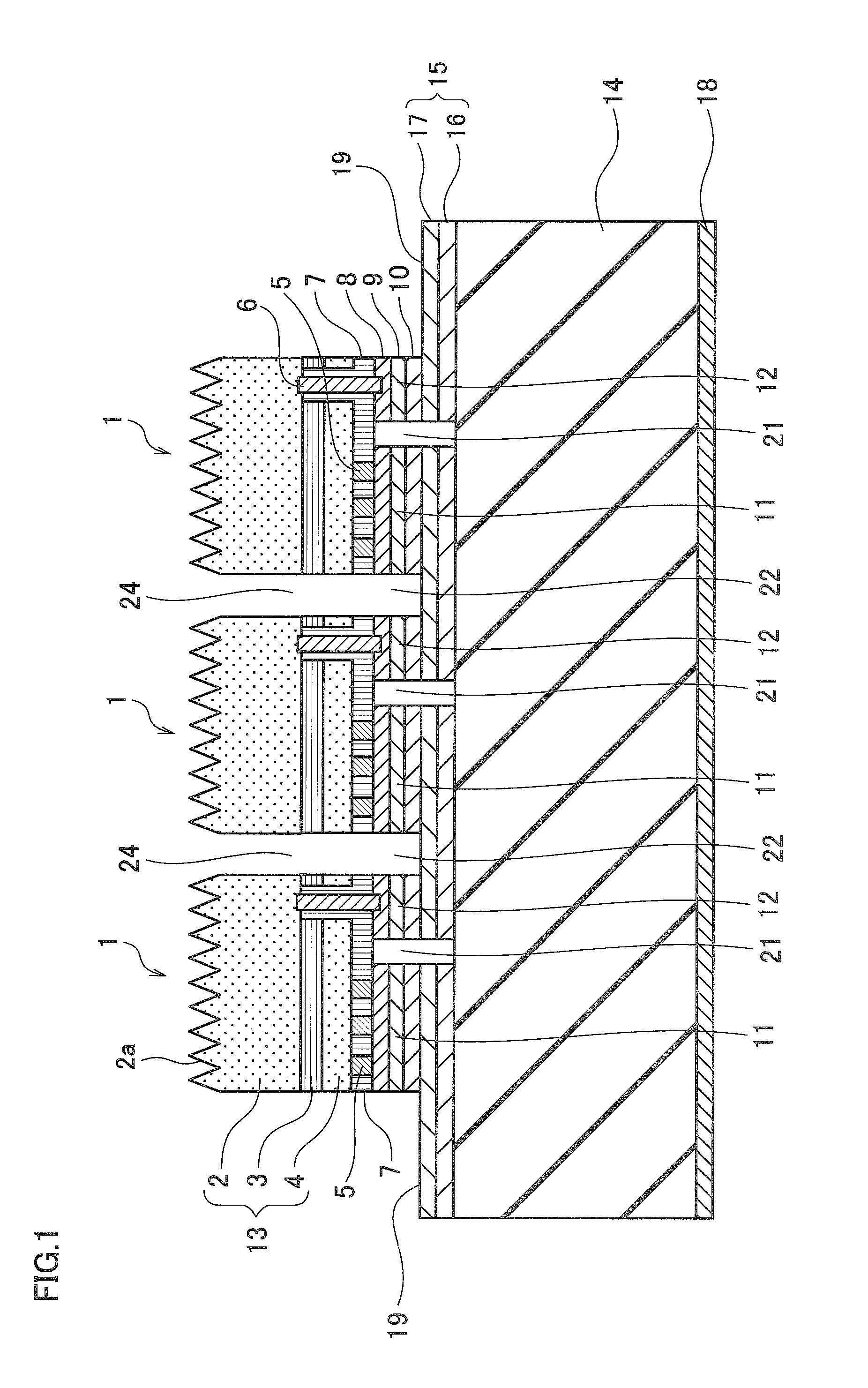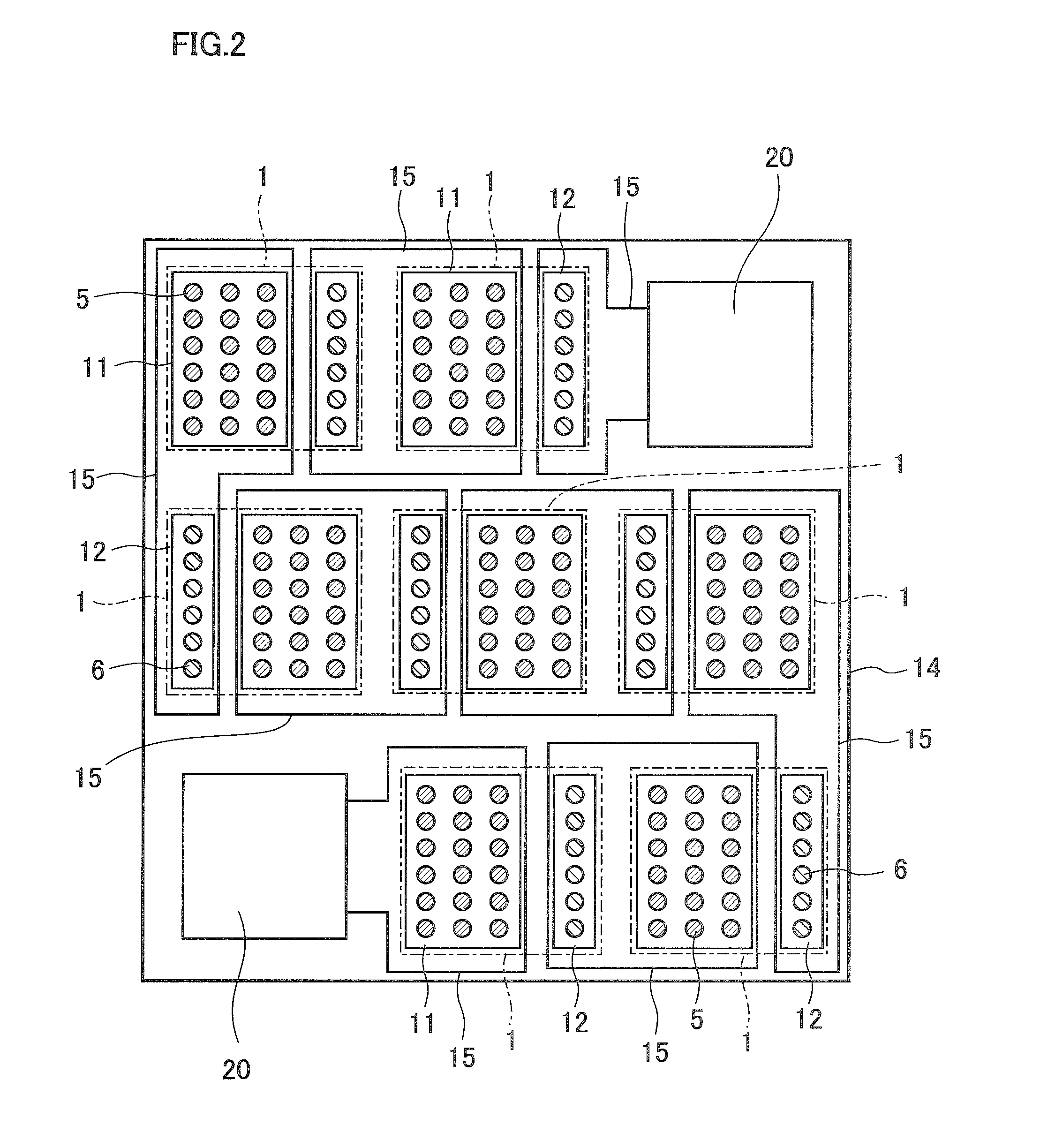Light emitting diode
a diode and light-emitting technology, applied in the direction of basic electric elements, electrical equipment, semiconductor devices, etc., can solve the problems of high cost, insufficient brightness, and difficulty in uniform dispersion and supply of current to the overall led chip from the circular electrode, and achieve the effect of small drive current and high light emission outpu
- Summary
- Abstract
- Description
- Claims
- Application Information
AI Technical Summary
Benefits of technology
Problems solved by technology
Method used
Image
Examples
examples
[0078]The light emitting diode having a structure similar to the aforementioned embodiment was manufactured.
[0079]Dimensions of an outer shape of this light emitting diode were set to 1 mm×1 mm, and about 200 μm (thickness). Further, the outer shape of each light emitting element 1 was set to 320 μm×320 μm. The dimension of the bonding pad electrode 20 was set to 100 μm×100 μm.
(Manufacture of an Epitaxial Wafer for LED with Electrodes)
[0080]As shown in FIG. 3, first, AlGaInP-related epitaxial layers composed of four layers were grown on a substrate 30 composed of n-type GaAs, being an epitaxial growing substrate by MOVPE method, to thereby form an epitaxial wafer for LED. Namely, an etching stop layer 31, the second semiconductor layer 2, being a n-type AlGaInP clad layer, the active layer 3 having a quantum well structure of AlGaInP, and the first semiconductor layer 4, being a p-type AlGaInP clad layer, are sequentially formed on the substrate 30. In order to obtain a further exce...
PUM
 Login to View More
Login to View More Abstract
Description
Claims
Application Information
 Login to View More
Login to View More - R&D
- Intellectual Property
- Life Sciences
- Materials
- Tech Scout
- Unparalleled Data Quality
- Higher Quality Content
- 60% Fewer Hallucinations
Browse by: Latest US Patents, China's latest patents, Technical Efficacy Thesaurus, Application Domain, Technology Topic, Popular Technical Reports.
© 2025 PatSnap. All rights reserved.Legal|Privacy policy|Modern Slavery Act Transparency Statement|Sitemap|About US| Contact US: help@patsnap.com



